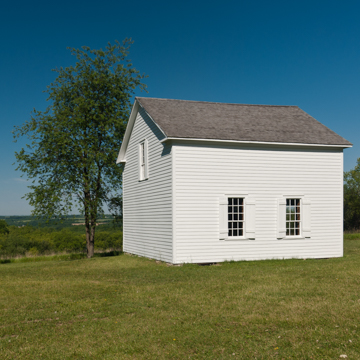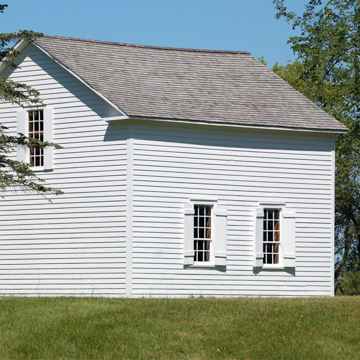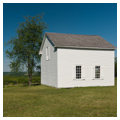Few parts of the United States are more Norwegian than the area around Mt. Horeb and Blue Mounds. The chain of Norwegian immigration to this place began about 1846, when two men from Valdres, a region in south-central Norway, spent some time here. They sent encouraging letters back home, prompting Aslak Olsen Lie (whose log cabin is being preserved at Folklore Village in Dodgeville) to bring a larger party of immigrants. Lie’s group established the community of East Blue Mounds, the first Norwegian settlement in western Dane County, in 1848.
Two Lutheran factions—members of the official state Norwegian church and followers of Norwegian religious reformer Hans Nielson Hauge—cooperated to build this meeting house soon after they settled in the area. It was an unusual joint effort, since each group held different views about proper religious practice. In 1858, however, the followers of the official Norwegian church split off and built their own building in nearby Daleyville. Hauge’s followers continued to use the log building until 1887, when they also erected a new structure elsewhere. Today the little log church is cared for by the Perry Hauge Log Church Preservation Association. The one-room church is simple and functional, constructed of logs and coated inside with a thin lime plaster. In later years, the exterior was sheathed in clapboards, but the log construction remains evident on the interior. The original pews, pulpit, and altar rail are extant, as is a small balcony with a latticed railing.



















